The Top 8 Plants That Attract Hummingbirds
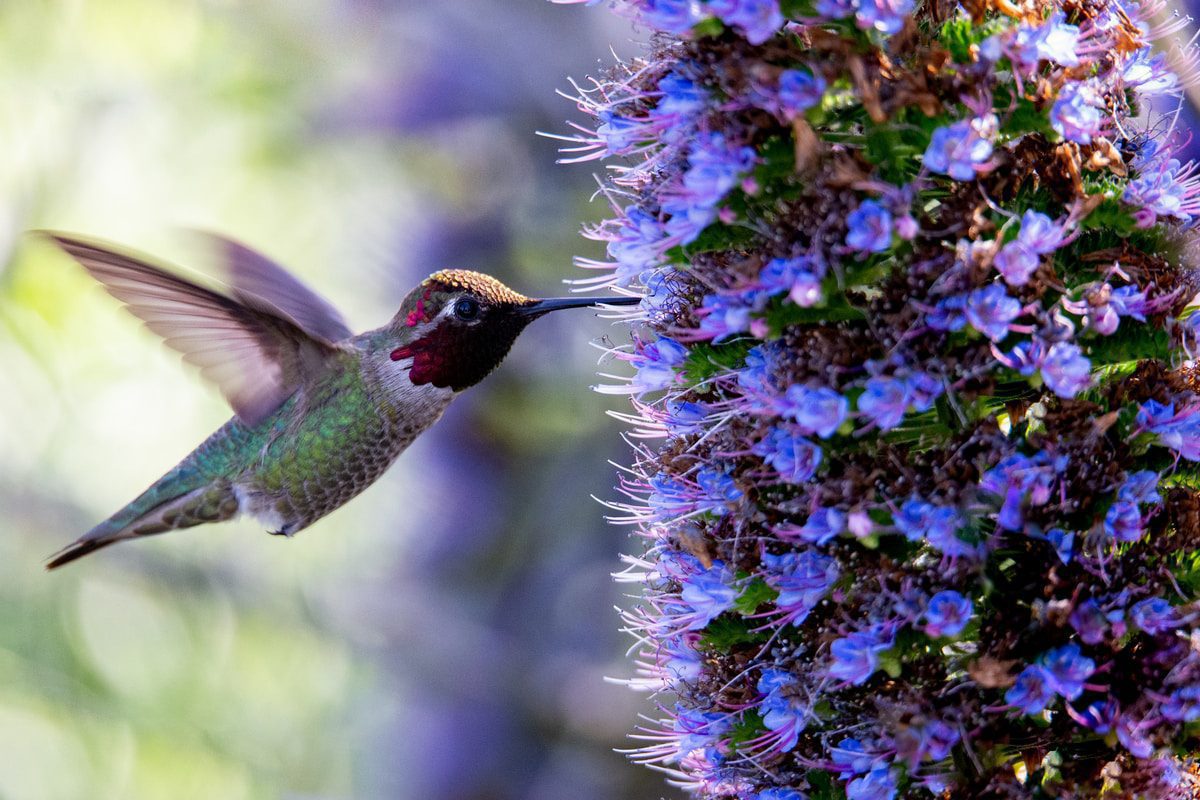
The way hummingbirds flutter through the air from plant to plant is a wonder of nature. Hummingbirds are like tiny flying daredevils that captured our hearts with their beautiful vibrant colors and fascinating habits. How can we attract them to our gardens?
It takes a lot of trying and study to find plants that hummingbirds appear to like and go toward, but we gladly put in the effort, and it was well worth it!
Use GardeningCalendar’s plant selection tool to quickly find native plants which meet selection criteria, such as attracting hummingbirds. In this article, we’ll be talking about 8 different plants that appeal to hummingbirds, going into the details of their origin, life cycle, and appearance.
What Are The Characteristics of Plants That Attract Hummingbirds?
Hummingbirds can be particularly choosy when it comes to flora, but they do have preferences.
1. Color
You can attract hummingbirds with colour. They rely largely on vision to locate food. Because of their weak sense of smell, these little birds rely on brilliant colours to identify plants from a distance. Hummingbird-pollinated flowers have warm, vibrant hues such as red, yellow, and orange. It also appears that these hues hide these blooms from pollinators in order to lessen competition.
While it has not been shown that hummingbirds have specific colour preferences, reds appear to stimulate their interest quite a little. They’re frequently spotted inspecting red feeders, red plant labels, and even crimson clothes on a gardener.
2. Nectar
Hummingbirds can eat up to 3 times their body weight daily, so they are attracted to plants that produce a lot of nectar. North American hummingbirds flap their wings roughly 53 times per second on average, implying that they require the sugar found in nectar to power their high-energy lifestyle. This explains why hummingbird-pollinated flowers, for example, generate more nectar as compared to insect-pollinated equivalents.
3. Shape
Hummingbirds are attracted to blooms that are long and tubular in shape, which are ideal for their long beaks and tongues. They also like plants that droop or hang pendulously and have modified leaves or petals that allow them to hover while feeding. Hummingbirds do not appear to favour plants with large landing areas or elongated structures.
8 Plants That Attract Hummingbirds
Sierra Larkspur (Delphinium glaucum)

Also known as mountain larkspur and glaucous larkspur, the Delphinium flower is native to western North America from Arizona to Alaska. You can find this wildflower growing in moist mountainous environments, such as meadows and river banks.
The Sierra Larkspur blooms in early summer, a great time for you to spot some hummingbirds, and sometimes once again in late summer and early fall. This plant can grow from one to multiple green erect stems and depending on its variety, it can reach an average height somewhere between 2 to 8 feet tall. On top of the stem, you can see a large inflorescence containing over 50 widely spaced flowers. Their petals and sepals have striking deep blue to dark purple colors.
- Life Cycle: Perennial
- Bloom Time: Early Summer, possibly once more in late or early Fall
- Family: Ranunculaceae
Cardinal Flower (Lobelia cardinalis)
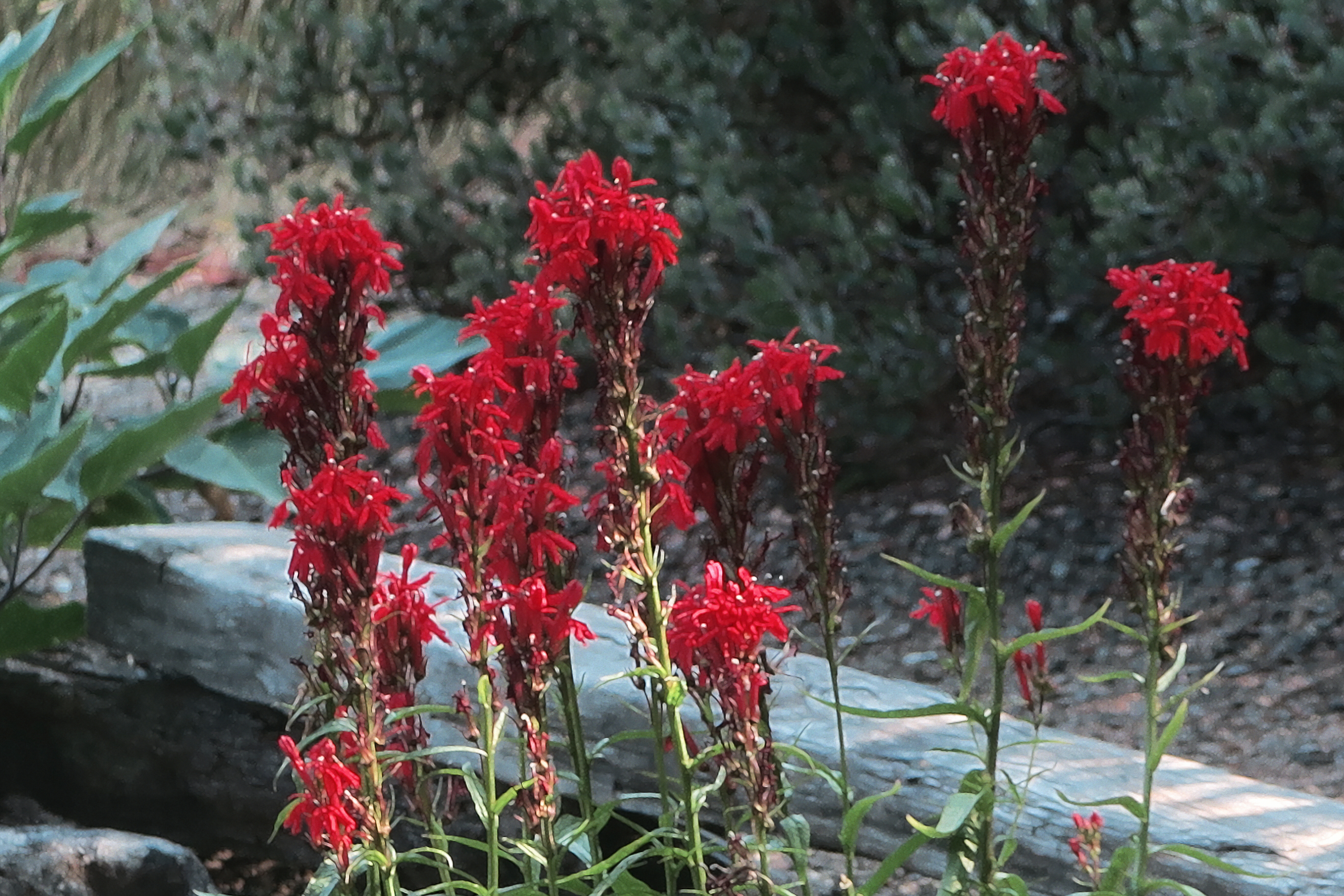
Widely present across the country, the Cardinal flower is native to the Americas, from southeastern Canada through the eastern and southwestern United States, which means you can find it in almost the entire lower 48 states!
This herbaceous plant grows up to 3-4 feet tall, requiring moist conditions and shady areas, so you can frequently see them in wet places like swamps and stream banks.
They bloom mid to late summer, with a gorgeous vibrant red color, ideal for attracting hummingbirds. They actually rely mainly on the little balls of energy for pollination.
- Life Cycle: Perennial
- Bloom Time: Mid to late Summer
- Family: Campanulaceae
Trumpet Vine (Campsis radicans)
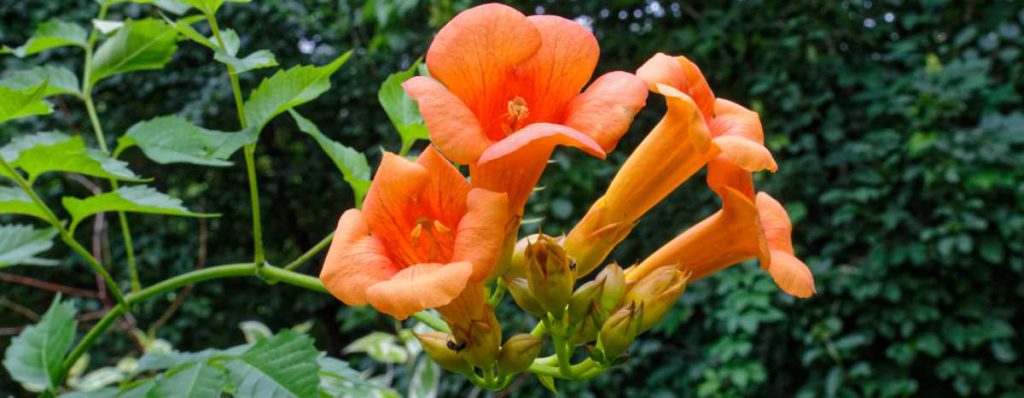
Alternatively known as Trumpet Creeper, Trumpet Vine flower is an excellent go-to if you’re hoping to meet some hummingbirds. In fact, in North America, the Trumpet Creeper goes by the name Hummingbird Vine.
This flower is native to the eastern United States, but it’s fairly easy to grow that you can find it naturalized in the western United States. When I say grow, I mean serious height! These plants are notorious for their crazy height, reaching 40 feet tall in many cases.
It’s a deciduous vine, commonly found in woodlands and riverbanks. Their distinct feature which makes them enticing for hummingbirds is their stylish trumpet-shaped flowers of bright red and orange colors.
- Life Cycle: Perennial
- Bloom Time: July to September
- Family: Bignoniaceae
Trumpet Honeysuckle (Lonicera sempervirens)
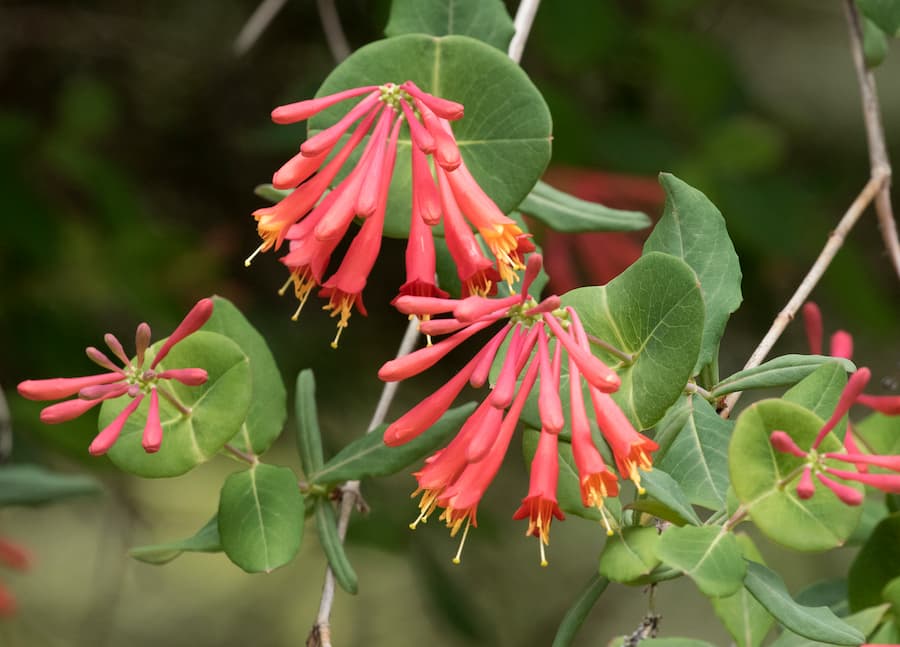
Another plant native to the eastern United States as well, the Trumpet Honeysuckle is also known as coral honeysuckle or scarlet honeysuckle. It’s often confused with the Trumpet Vine and while the two share several similar qualities, the Trumpet Honeysuckle is less vigorous.
This vine also grows a bit smaller, reaching up to 20 feet tall. The bright clusters of red flowers are very inviting to hummingbirds, going as far as being a natural favorite of Ruby-throated hummingbirds. The orange to red flower blooms in late Spring.
- Life Cycle: Perennial
- Bloom Time: June
- Family: Caprifoliaceae
Bee Balm (Monarda Trimingham)
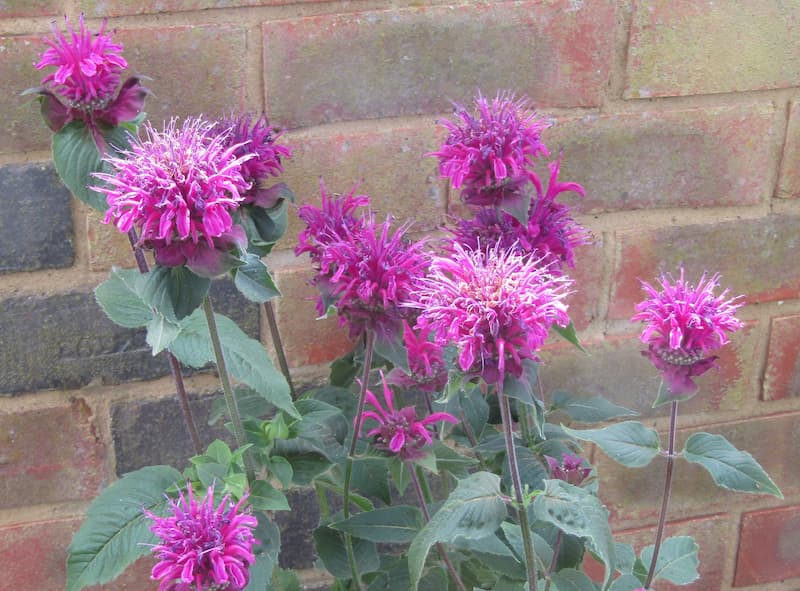
The Bee Balm is native to eastern North America, growing to rather a small size of up to 3 feet wide as well as 3-4 feet tall. It’s obviously not as large as other plants on our list, but it surely is as attractive to hummingbirds as any. This flower blossoms in mid to late Summer, with the ability to remain blooming in early fall. Its petals are spikes but they come in a stunning array of colors like white, pink, red, and purple.
The Bee Balm is also commonly known crimson beebalm, scarlet beebalm, scarlet monarda, Oswego tea, or bergamot. This flower loves being out in the sun, requiring moist to wet soil for growth.
- Life Cycle: Perennial
- Bloom Time: July to September
- Family: Lamiaceae
Foxglove (Digitalis purpurea)

Considered one of the most beautiful plants on the planet (I think so too!), Foxglove does a kickass job of attracting hummingbirds thanks to its tubular brightly colored flowers.
Foxglove flowers bloom in mid-Summer and may be red, pink, yellow, white or purple depending on the variety. These flowers rest on a long leafy stem that can grow as tall as 6 feet. The flower itself, however, can be so easily fitted over one of your fingertips!
Digitalis Purpurea is native to western and southwestern Europe, western and central Asia, and northwestern Africa. It’s typically seen in a diverse range of habitats, such as sea cliffs, open woods, and rocky slopes.
You should keep in mind that Foxglove is an invasive plant. All parts of the plant are poisonous to people, pets, and livestock. So, be careful when dealing with it!
- Life Cycle: Perennial
- Bloom Time: Mid-Summer
- Family: Plantaginaceae
Flowering Tobacco (Nicotiana alata)
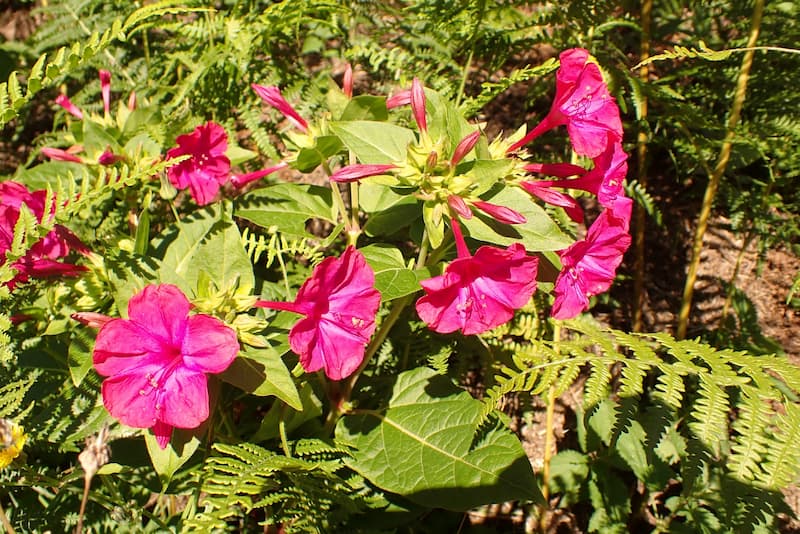
Nicotiana Alata is one of the species of tobacco, going by other names such as jasmine tobacco, sweet tobacco, winged tobacco, and Persian tobacco. It’s native from southern Brazil to northeastern Argentina.
It has an elegant look and a delightful scent, probably why it’s mostly grown as an ornamental plant. This species of flowering tobacco plant grows well over 25 inches tall. They carry branched flower stalks producing flowers that open only at night.
Flowers come in a variety of colors including white, pink, crimson, lime green, yellow, and crimson. Bloom starts in early summer and carries on into fall.
- Life Cycle: Perennial
- Bloom Time: July to September
- Family: Solanaceae
Columbine (Aquilegia canadensis)
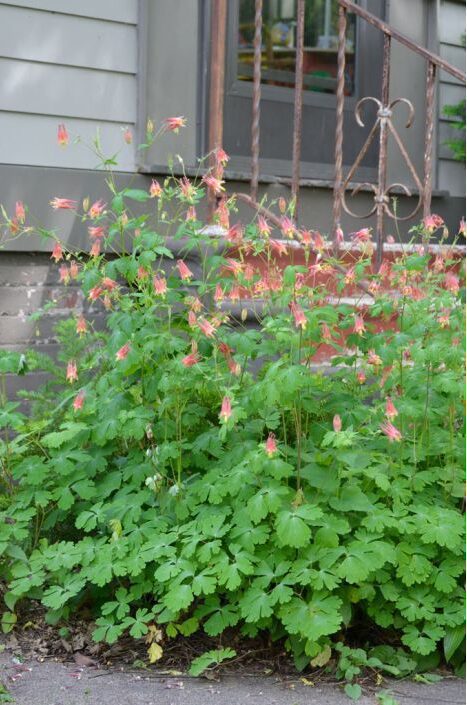
Columbine flowers refer to any of the numerous species from the genus Aquilegia. However, we’ll be talking particularly about Red Columbine, also known as Canadian columbine and wild columbine.
This plant is native to eastern North America where you can usually spot them on woodland and rocky slopes. It grows to reach up to 35 feet tall. Wild columbine flowers have such a unique shape, with vibrant yellow and red colors. They’re early bloomers, typically in the late Spring of May, which is such a happy coincidence for hummingbirds as they make their way back north from their winter homes.
Each flower grows to a maximum of 3 inches long and carries its nectar in round ends which give insects a seriously hard time to access, but for a hummingbird, it’s a piece of cake!
- Life Cycle: Perennial
- Bloom Time: May
- Family: Ranunculaceae
Final Thoughts
Hummingbirds are one of the most fascinating species to examine; their size, speed, appearance, and behaviours all make them appealing targets for bird watchers. Simply draw them in, sit back, and presto!